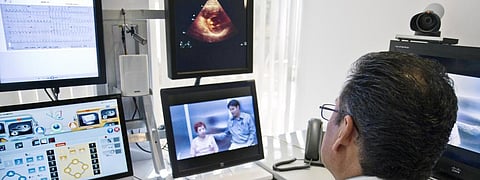Is telemedicine useful tool to fight COVID-19?
The novel coronavirus disease (COVID-19) continues to spread across the world. There is currently no medication or vaccine that can be used to treat or prevent the COVID-19 pandemic.
The virus spreads so fast that governments across the world asked people to self-quarantine. Healthcare providers are not adequately supplied with resources to deal with the pandemic.
Social distancing was said to be the key to curb the spread of COVID-19. So, can patients receive healthcare at home without going to hospitals?
This is where telemedicine — defined by the World Health Organization (WHO) as the delivery of health care services where distance is a critical factor — comes in.
China, the United Kingdom and the United States use telemedicine effectively for screening patients through tele-consults, reducing unnecessary hospital visits.
Hospitals should be prepared to use tele-health as a tool in fighting the outbreak, according to Nancy Messonnier, director of the National Center for Immunization and Respiratory Diseases at the US Centers for Disease Control and Prevention.
Telemedicine, thus, holds significance for countries like India that have low doctor-to-patient ratios.
How telemedicine can help against COVID-19
At least one doctor is needed for a population of 1,000, according to WHO guidelines.
The Medical Council of India and the NITI Aayog developed new guidelines released on March 25, 2020 for registered medical practitioners to deliver consultations to patients via telemedicine.
The guidelines aim to empower registered doctors to reach out to patients safely using technologies for the exchange of valid information.
This information can be used for diagnosis, treatment and prevention of disease and injuries, research and evaluation and for continuing the education of healthcare providers.
The guidelines have empowered medical practitioners. They have, however, also imposed many restrictions. Registered medical practitioners, for instance, have to take the patient’s consent.
If the patient denies her consent, however, the practitioner cannot insist that the patient to go in for telemedicine.
The guidelines claim all medico-legal, regulator and ethical issues have been taken care of. Telemedicine is, however, still governed by existing laws and regulations meant for conventional healthcare and information technology, posing medico-legal and regulatory issues.
Telemedicine is still a way to overcome severe shortages of many essential goods and services, from hand sanitisers and N95 masks to ICU beds and ventilators.


